Introduction
There are leading fundamental technologies that are indispensable for realizing a carbon neutral society (a state where there are net-zero carbon dioxide emissions, achievable by balancing emissions and their removal). These technologies include photocatalyst technology and bioengineering of microbes. Photocatalysts can use sunlight energy to degrade pollutants or generate fuels, such as hydrogen gas, from water. Microbes can be applied to the generation biofuels and chemical precursors, as well as for decomposing waste materials such as plastic. Leveraging Kobe University's strengths in both these fields, a multidisciplinary joint research project has been established entitled: 'A sunlight and bioenergy-driven resource recycling system to convert waste plastic into green resources and hydrogen'
"We can resolve global energy problems by recycling resources from waste"
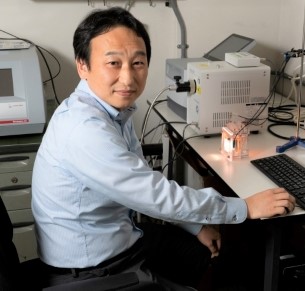
Project Leader: Professor TACHIKAWA Takashi (Molecular Photoscience Research Center)
My field of research is photochemistry. Using photocatalysts, I mainly conduct research focusing on the solar water-splitting reaction whereby water is converted into hydrogen and oxygen. With the world currently facing the problem of how to achieve decarbonization, I have been developing technology to convert water into hydrogen using sunlight energy. This green technology does not use fossil fuels nor emit carbon dioxide.
The multidisciplinary co-creative research that I am currently conducting involves working with biotechnology researchers to combine photocatalyst technology and microbes' bioenergy in order to optimize their merits. On a global level, there are not many studies on combining photocatalysts and biomaterials like enzyme and bacteria.
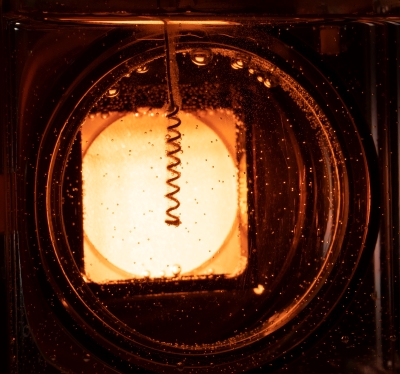
However, there has been much progress in the bioengineering field at Kobe University, with the improvement of various enzyme production techniques and research infrastructure. Through collaborating with professors who are experts in proteins and biodegradable polymers, we have been able to use waste plastic as a raw material. The constituents obtained through breaking down plastic can be applied to photocatalysts to produce hydrogen. This hydrogen and the hydrogen bacteria can be used to produce plastic precursors from waste plastic without using fossil fuels. We are aiming to establish new principles and technologies with this green resource recycling method.
In the future, we aim to be able to covert various types of waste into hydrogen energy and useful substances. This is not limited to plastic but also includes food waste and other everyday wastes. If implemented, this research has the potential to decrease carbon dioxide emissions and resolve world energy issues.
First of all, the plan is to conduct basic research for three years on combining bio and photocatalyst technologies. Subsequently I would like to work with researchers from various fields including the natural sciences, social sciences and medical fields, with the ultimate aim of establishing a research hub with 'Green Resource Recycling' as its catchphrase. From an international standpoint, I hope we can contribute towards regions and countries that require this kind of technology.
Discussions between faculty members from different fields can produce a variety of new ideas. I feel that this is a very appealing project because it enables us to conduct research that is impossible to do alone.
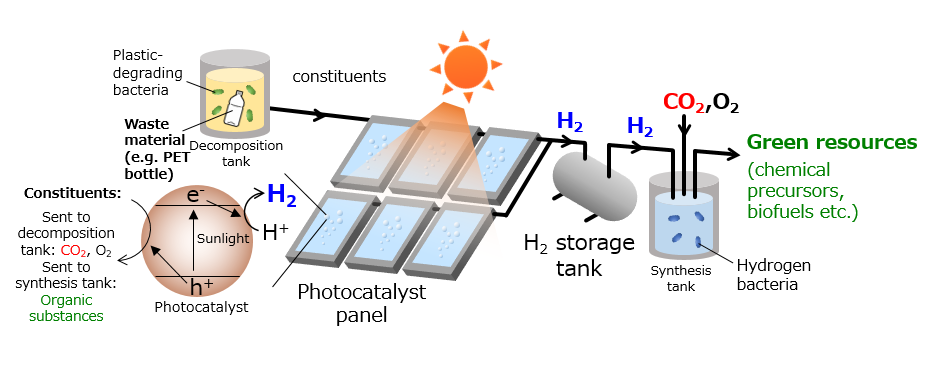
Profile: TACHIKAWA Takashi
Professor, Molecular Photoscience Research Center
Prior to taking up his current position in April 2022, Professor Tachikawa was an assistant professor at Osaka University's Institute of Scientific and Industrial Research (SANKEN), and associate professor at Kobe University's Graduate School of Science and subsequently the Molecular Photoscience Research Center.
"Revealing plastics' decomposition processes will contribute towards resource recycling and material development"
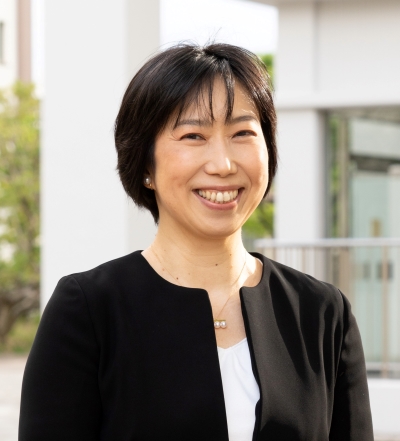
Professor SATO Harumi (Graduate School of Human Development and Environment)
My specialization is research on polymer materials. My current target is plastic materials; I am conducting analyses of them using vibrational spectroscopy*. In particular, I am focusing on researching biodegradable plastics with the aim of developing plastics that are environmentally friendly.
For the Resource Recycling Innovation Project, I am pursuing research into the mechanisms of bacteria that can break down plastic materials as part of the process of converting waste plastic into energy. I am in charge of investigating the internal structure of plastics using analytical instruments. Many aspects are not well understood regarding how plastics decompose. Illuminating these aspects will yield great benefit, giving us knowledge regarding the development of new materials and energy conversion.
One of the targets of this project is PET resin. Market consumption of PET is very high; it would be possible to recycle this resource if we could break it down and convert it into energy. Developing biodegradable materials is also important; however, it is vital to develop a system for recycling these resources. Therefore, I think that the results of this multidisciplinary joint research will be of great benefit to society.
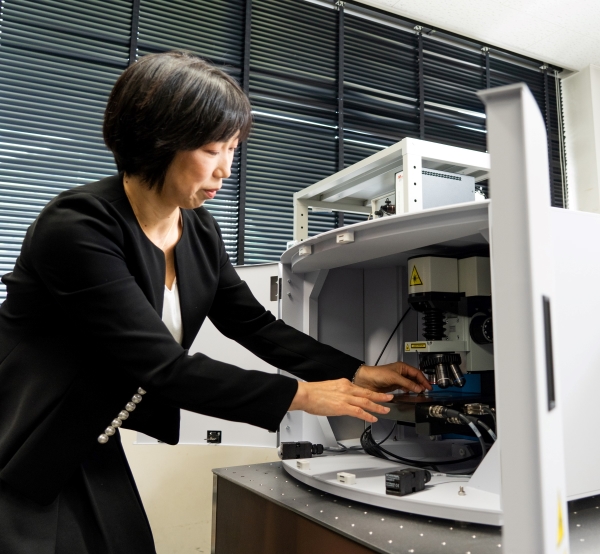
However, there are many other types of plastic material besides PET, including polyurethane, polypropylene and polystyrene. It is necessary to identify effective decomposing bacteria and conditions for each one. In the end, if we could combine the functions of different bacteria that can break down different materials, it would be possible to develop a versatile method of processing waste. Even though it sounds like a dream, I hope to turn it into reality because of the scale of the market and the huge impact that such an innovation would have on the world.
An advantage of conducting research with experts from different fields is that the research is approached from perspectives that you wouldn't come up with working alone, therefore you gain new knowledge and insight. It is very inspiring and I am looking forward to the possibility that this research could develop in unforeseen ways.
*Vibrational spectroscopy: A method of investigating the structure of a material. The sample is irradiated with electromagnetic waves, and the transmitted or reflected light is measured as a function of the wavelength or frequency of the radiation.
Profile: SATO Harumi
Professor, Graduate School of Human Development and Environment
Prior to taking up her current position in April 2018, Professor Sato was a postdoctoral researcher at Kwansei Gakuin University's Graduate School of Science and Technology, and an associate professor at Kobe University's Graduate School of Human Development and Environment. She is also an executive assistant to the president (in charge of admission reform).
Project Members:
TACHIKAWA Takashi: Professor, Molecular Photoscience Research Center
KIMURA Tetsunari:Associate Professor, Graduate School of Science
OGINO Chiaki: Professor, Graduate School of Engineering
HASUNUMA Tomohisa: Professor, Engineering Biology Research Center
SATO Harumi: Professor, Graduate School of Human Development and Environment






